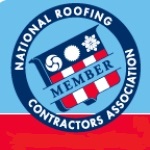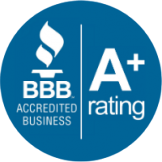Long Island Roofing: Article About Tips For Roof Maintenance
The process of preserving something by keeping it in good condition. In the case of your roof, regular care and upkeep can extend the life of your roof by identifying small problems before they become larger issues.
Long Island roofing FAQ: What is involved in an annual roof inspection done by a professional?A professional roofer will complete a thorough evaluation of the entire roofing system and its related components. This includes checking the integrity of the shingles, the soundness of the drains, the condition of the flashing around skylights, chimneys and vents, and the shape of the downspouts and gutters. The inspection also involves checking the attic for water stains which would indicate signs of rotting decking underneath the surface of the roof.

Repairing or replacing your roof can be a costly undertaking. By spending time every six months looking at your roof, you may be able to identify maintenance opportunities that can help avoid costly repairs down the road.
The perfect times of the year to look at your roof are spring and fall, when you are clearing your eavestrough of debris. Start by looking for damaged, curling or missing shingles as well as other signs of wear and tear. Should you not feel competent performing this inspection yourself, contact the experienced professionals at Long Island Roofing.
Moss growth on the roof of your home is more than unsightly. The root-like structure of moss can cause the shingles to pit. It can also start to grow underneath the shingles and cause them to lift up and separate from the roof. Moss tends to grow in shady areas, so keeping your trees trimmed away from the roof will help to minimize the likelihood that moss will flourish. Even if you keep the branches trimmed, moss can still develop. Clean all the moss away safely and gently using a treatment recommended by your roofer. If you see any regrowth, treat again immediately to prevent it from returning.
Inspect the metal areas of the roof for rust. Should you spot any, use a wire brush to get it off the surface of the metal. Once the rust spots are gone, prime and paint the metal to guard against re-occurrence. If the rust has penetrated the surface and caused extensive damage, it is best to consult with a roofing expert to decide the best course of treatment.
A roofing professional from Long Island Roofing can answer any question you have about GAF roofing materials or architectural roofing.
If there are any signs of leaking, such as water spots on the ceiling inside the home or dampness or mold in the attic, immediate action is required. Leaks in a roof get worse over time. You will need to contact a trusted and reliable roofing professional to evaluate where the water is originating from and the best course of action to correct the problem.
Good ventilation in the attic protects the roof from damage caused by water condensation. In the absence of proper ventilation, water vapor may cause the wooden rafters and sheathing to rot, and can even cause damage to the shingles. Ensure the attic has unobstructed vents with screens to keep the animals out. For attics that are larger in size, ventilation fans are recommended.
Your roof needs help to keep the water off of it. A large accumulation of snow or ice could cause the roof of your home to collapse. Should you notice a large build-up, very carefully pull the snow off the roof using a snow rake. In the spring, summer and fall months, sweep or blow any debris off the roof. Twigs, branches or sticks can cause damage to the shingles, allow for moss growth and possibly clog the downspouts and gutters. Tree branches overhanging the roof allow for dripping water and falling leaves to accumulate on the roof and in the gutter. They can also break away from trees due to excess ice and snow in a harsh winter storm, causing structural damage to the roof. Keep the branches trimmed and out of reach of the roof.
Even though you may perform regular roof maintenance, you should still have a professional roofer perform a yearly inspection. Not every potential problem can be identified by an untrained eye. Also, most homeowners do not have the proper equipment to safely climb on the roof.









